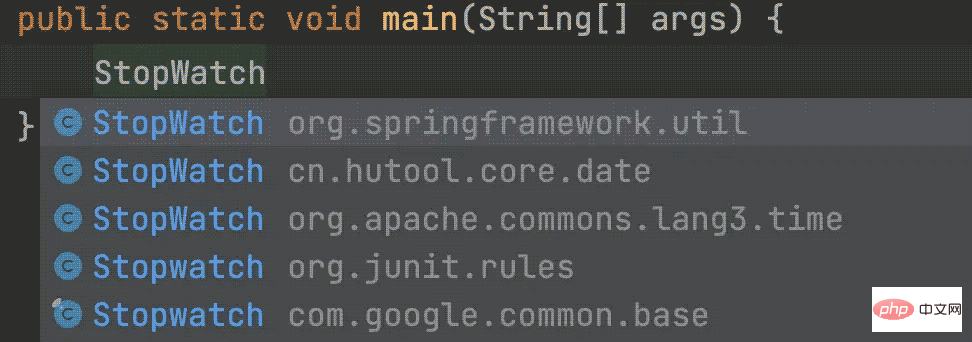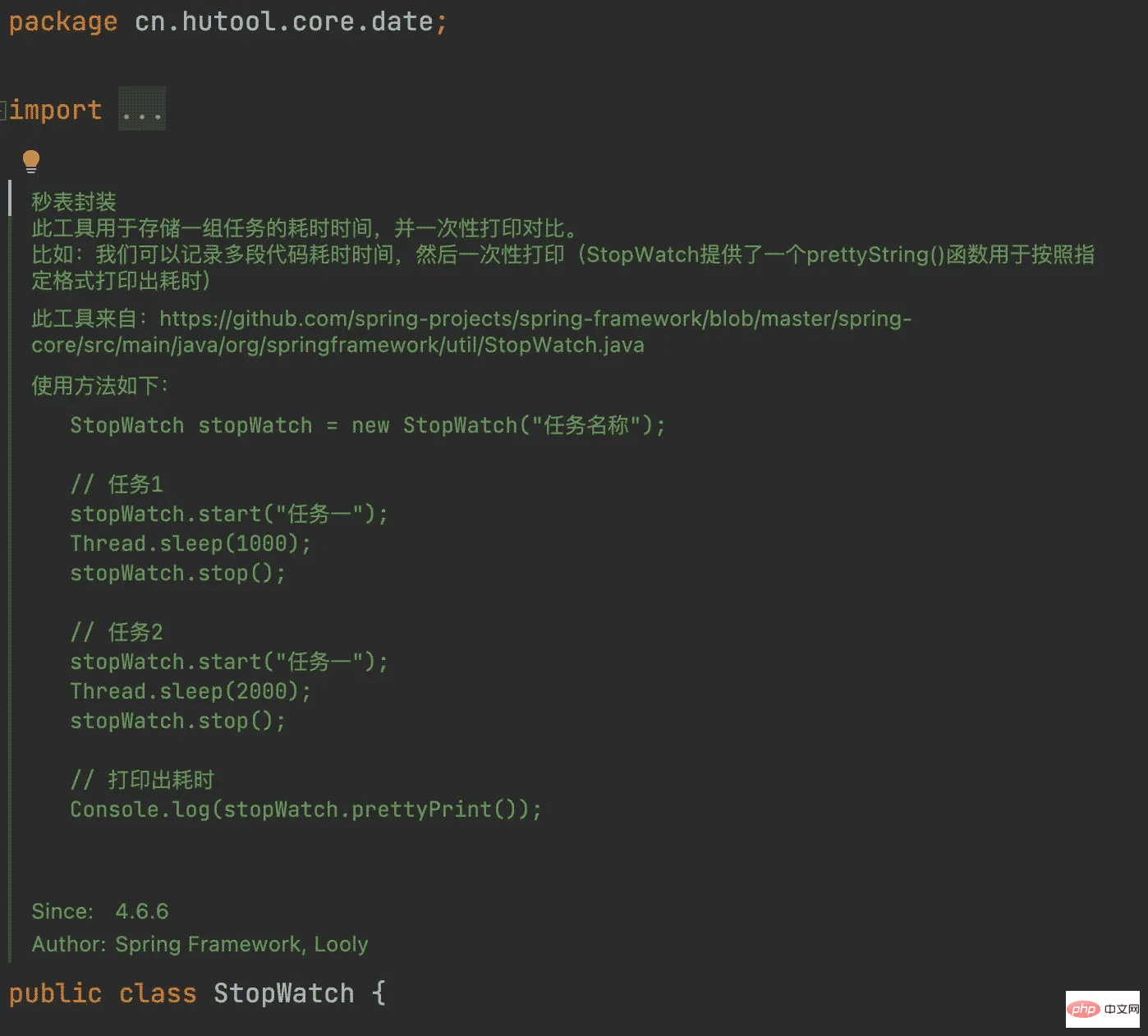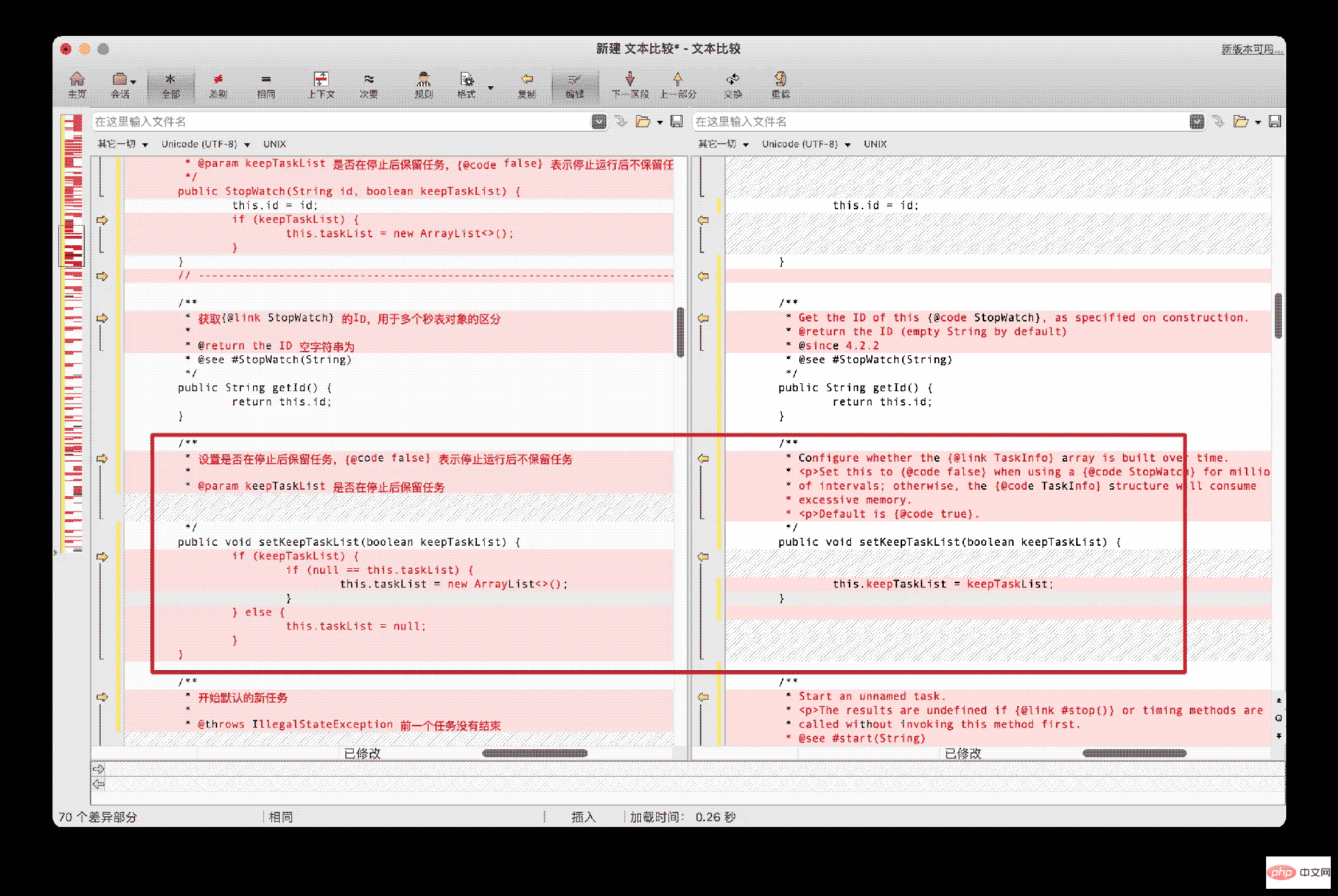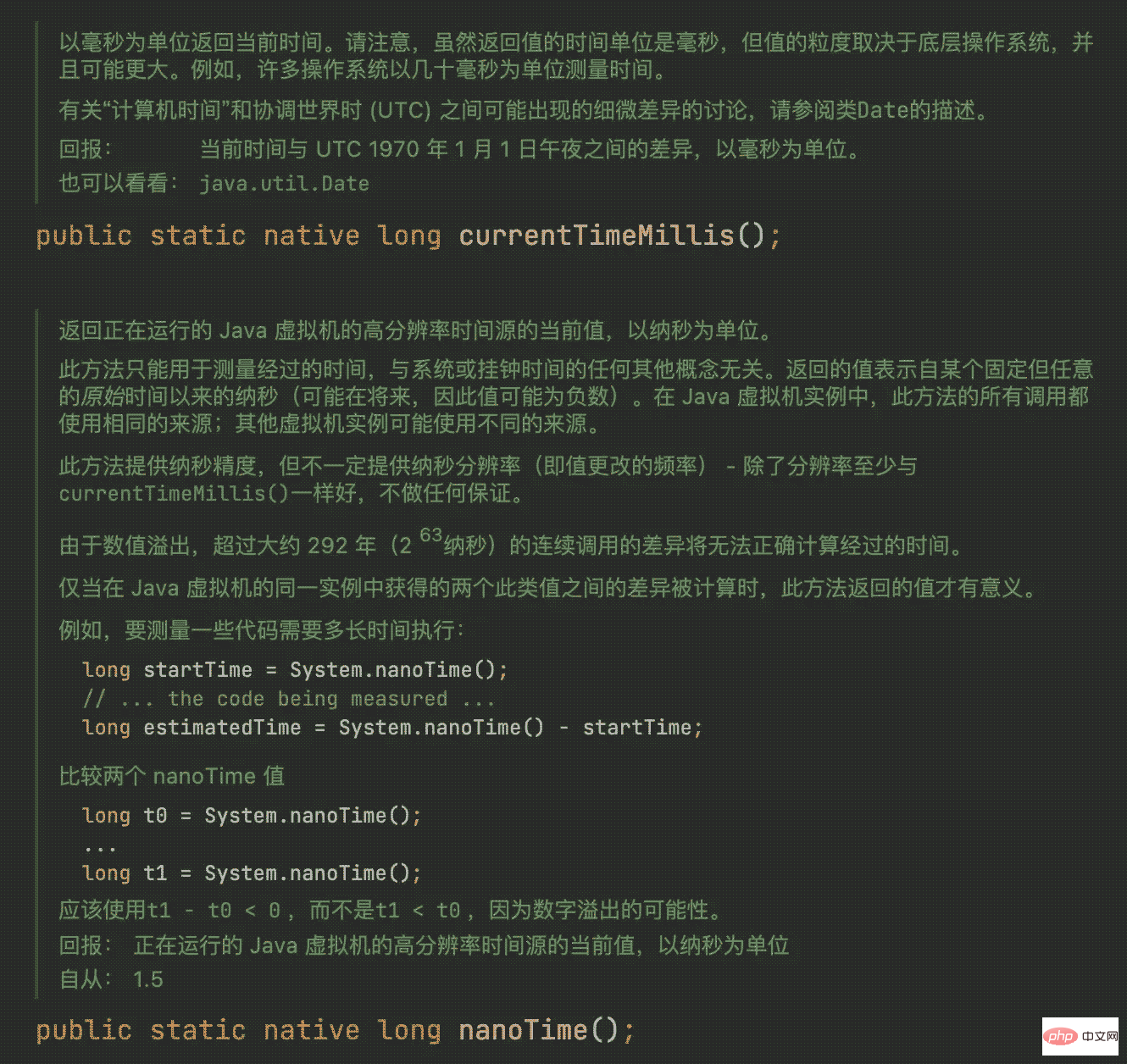Spring Boot原始碼如何實現StopWatch優雅統計量耗時
- 王林轉載
- 2023-05-11 14:13:131289瀏覽
引言
昨天,一位球友問我能不能給他解釋一下@SpringBootApplication 註解是什麼意思,還有Spring Boot 的運行原理,於是我就帶著他扒拉了一下這個註解的源碼,還有SpringApplication 類別的run() 方法的源碼,一下子他就明白了。
你別說,看原始碼的過程真的挺有趣,這不,我就發現了一個有趣的點。
public ConfigurableApplicationContext run(String... args) {
StopWatch stopWatch = new StopWatch();
stopWatch.start();
......
stopWatch.stop();
}Spring Boot 是用 StopWatch 來統計耗時的,而通常情況下,我們會用 System.currentTimeMillis() 來統計耗時,對吧?程式設計喵????開源專案裡就有這樣一段程式碼,在處理統一日誌處理切面的時候。
@Around("webLog()")
public Object doAround(ProceedingJoinPoint joinPoint) throws Throwable {
long startTime = System.currentTimeMillis();
long endTime = System.currentTimeMillis();
webLog.setSpendTime((int) (endTime - startTime));
}對比之下,我們就能發現,JDK 提供的 System.currentTimeMillis() 沒有 Spring 提供的 StopWatch 簡潔、清晰。
StopWatch使用
尤其是在多任務的情況下,StopWatch 簡直好用到爆????!
// 创建一个 StopWatch 实例
StopWatch sw = new StopWatch("沉默王二是傻 X");
// 开始计时
sw.start("任务1");
Thread.sleep(1000);
// 停止计时
sw.stop();
System.out.printf("任务1耗时:%d%s.\n", sw.getLastTaskTimeMillis(), "ms");
sw.start("任务2");
Thread.sleep(1100);
sw.stop();
System.out.printf("任务2耗时:%d%s.\n", sw.getLastTaskTimeMillis(), "ms");
System.out.printf("任务数量:%s,总耗时:%ss.\n", sw.getTaskCount(), sw.getTotalTimeSeconds());看到沒,是不是很簡單?
先new 一個StopWatch 物件
#再start 開始計時
- ##然後stop 停止計時
- 最後透過sw.getLastTaskTimeMillis() 得出時間差
任務1耗時:1002ms.#另外,StopWatch 還提供了一個sw.prettyPrint() 方法供打印出漂亮的格式化結果:任務2耗時:1105ms.
任務數:2,總耗時:2.107820109s.
StopWatch '沉默王二是傻X': running time = 2108529351 ns#有耗時,有佔用百分比,還有任務名,非常清楚。 除了 Spring,hutool 工具庫和 Apache common 工具包都提供了各自的 StopWatch。- ----------------------------------------------
ns % Task name
---------------------------------------------
1004338467 048% 任務1
1104190884 052% 任務2



public void stop() throws IllegalStateException {
if (null == this.currentTaskName) {
throw new IllegalStateException("Can't stop StopWatch: it's not running");
}
final long lastTime = System.nanoTime() - this.startTimeNanos;
this.totalTimeNanos += lastTime;
this.lastTaskInfo = new TaskInfo(this.currentTaskName, lastTime);
if (null != this.taskList) {
this.taskList.add(this.lastTaskInfo);
}
++this.taskCount;
this.currentTaskName = null;
}其實可以發現,StopWatch 的內部是透過System.nanoTime() 來計時的,本質上和System.currentTimeMillis() 差異並不大。 nanoTime 比 currentTimeMillis 的粒度更細,前者是以奈秒為單位,後者是以毫秒為單位。

StopWatch sw = StopWatch.createStarted();
Thread.sleep(1000);
System.out.printf("耗时:%dms.\n", sw.getTime());其他兩個都是透過 new 來建立 StopWatch 對象,commons-lang3 也可以透過 createStarted(建立並立即啟動)、create(建立)來完成。 還可以呼叫 suspend 方法暫停計時、resume 方法恢復計時、reset 重新計時。 // 暂停计时
sw.suspend();
System.out.printf("暂停耗时:%dms.\n", sw.getTime());
// 恢复计时
sw.resume();
System.out.printf("恢复耗时:%dms.\n", sw.getTime());
// 停止计时
sw.stop();
System.out.printf("总耗时:%dms.\n", sw.getTime());
// 重置计时
sw.reset();
// 开始计时
sw.start();
System.out.printf("重置耗时:%dms.\n", sw.getTime());以上是Spring Boot原始碼如何實現StopWatch優雅統計量耗時的詳細內容。更多資訊請關注PHP中文網其他相關文章!
陳述:
本文轉載於:yisu.com。如有侵權,請聯絡admin@php.cn刪除

